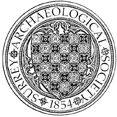Alton Road Sandpit, Farnham
Watching brief by I Barnes of SthnAS during sand extraction. No definite archaeological features were identified, although a possible plough scar contained a number of Roman pottery sherds, most of which appeared to come from a single vessel. A limited area of Pleistocene gravels was also identified, as was a buried soil of indeterminate date, although no Palaeolithic artefacts or biological material were noted within these deposits.


